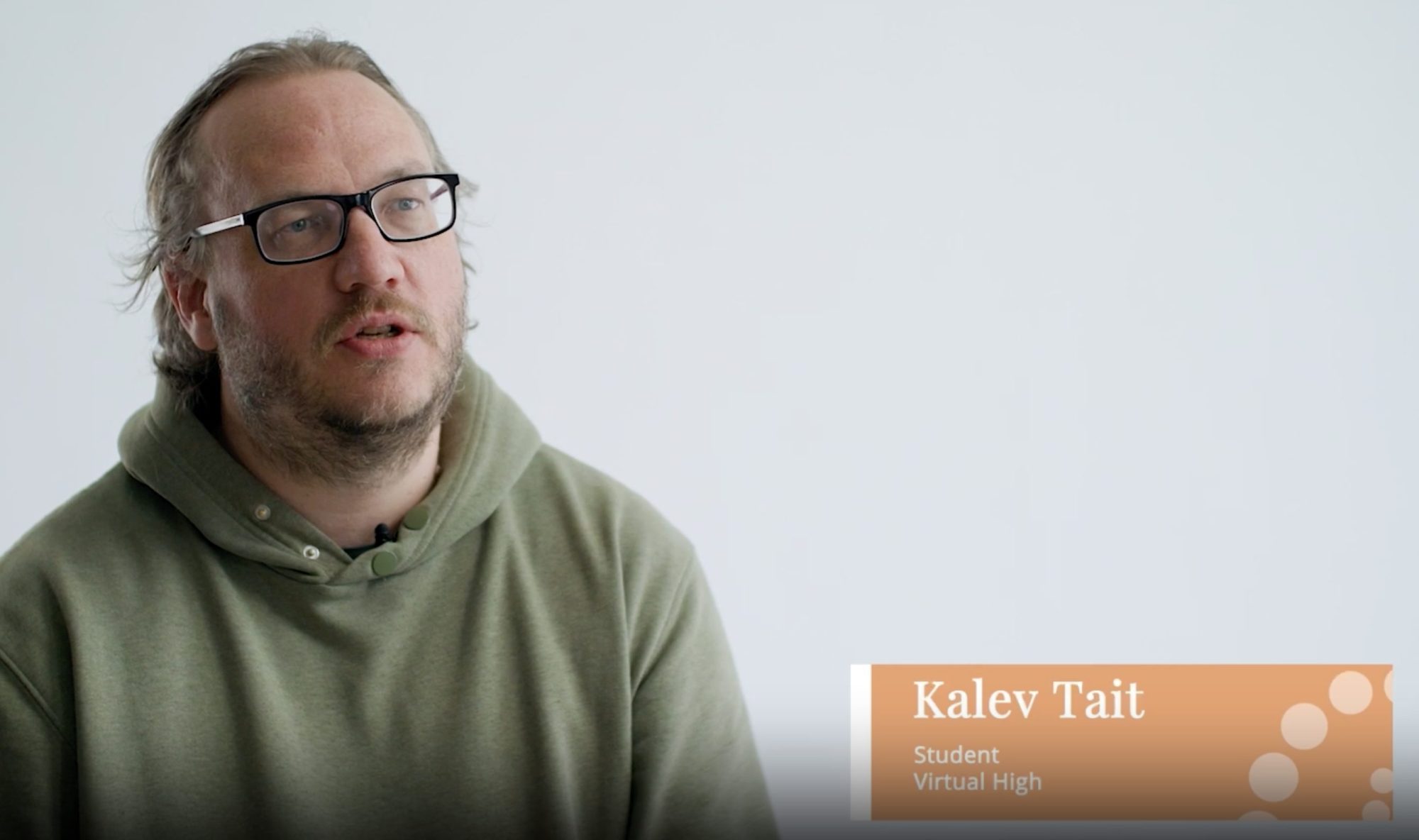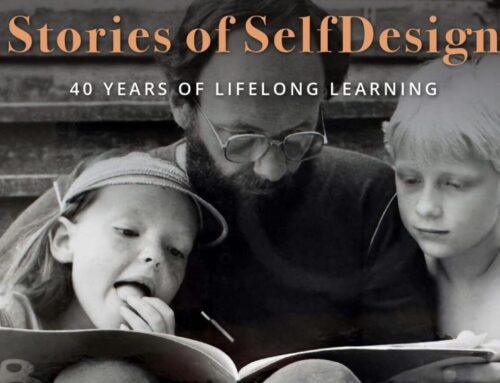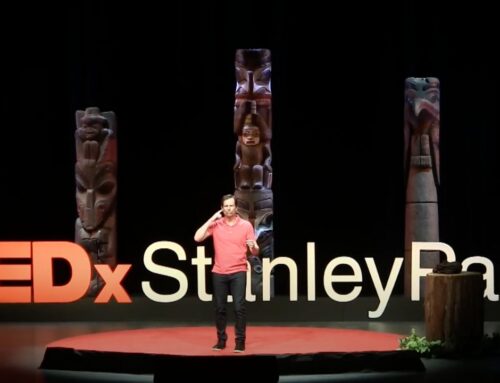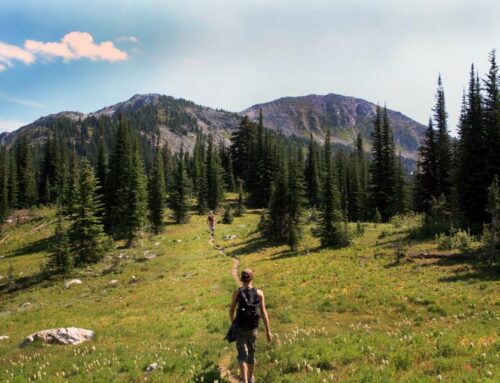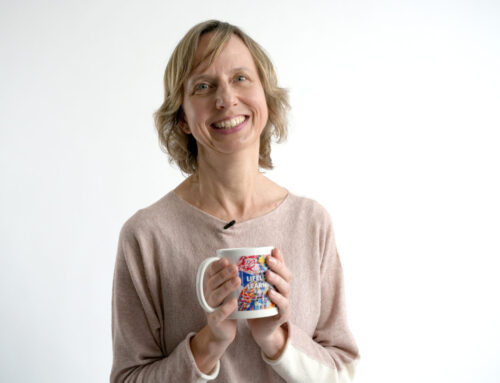Drawing on almost 20 years of experience producing video games in the U.K., Kalev Tait recently co-founded video-game company Ludic Lemur in 2023 in Vancouver. The Virtual High alumnus had returned, with his young family, to the city where he grew up and where his parents still live.
“I spend a lot of my time programming and coordinating the creative people to make something together,” he says. “I’m pretty much the hub through which everybody communicates. And I’m trying to make the company profitable.”
Video games have been a part of Kalev’s life since at least grade 9 when he joined Virtual High, the revolutionary program for high school–aged learners that was created in 1993 by Wondertree and SelfDesignr®Learning Community founder Brent Cameron.
“I’ve always been interested in playing games and in inventing games for people to play,” Kalev says. And although he didn’t design or program many games while he was a Virtual High, he did play games.
“We had some misgivings when Kalev was going to Virtual High,” his mother, Pille, says. “We wondered if he was doing anything other than playing games all day. But he did learn. And what he learned more than anything else was how to learn.” Pille, a systems ecologist and cyberneticist who studies the biology that underlies how we learn and who served on SelfDesign’s board of directors from 2014 to 2017.
Kalev comes to Virtual High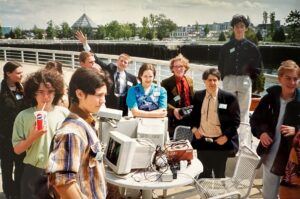
When teachers in the Vancouver and Surrey, B.C., school districts went on strike in spring 1993, Kalev’s parents were concerned he wouldn’t be able to take his final exams for the year.
They pulled the grade 8 student out of his brick-and-mortar school in Vancouver and enrolled him in private school for the last months of the school year.
“I hated it. And my grades shot up,” Kalev says. “My parents looked at this and said, ‘Well, something strange is going on here.’ They didn’t want to send me back to public school because it was obvious that it wasn’t working for me, but it was also obvious that this private school wasn’t working for me either.”
Over the following summer, the family looked at their options. They checked out a number of other private schools and alternative high schools. They went to school presentations and interviewed teachers, administrators and students to see if any of the schools might be a good fit.
“The telling factor for me,” says Pille, “was that at most of the interviews, Kalev was just sitting back, looking away, looking bored and just not engaged at all. But when we were in the interview at Virtual High, he sat forward and paid attention and asked questions.”
“I remember Devon’s enthusiasm,” Kalev says. Devon Girard had been enrolled since age 10 with Wondertree, the kindergarten to grade 9 program founded by Brent Cameron in 1983, and was continuing into Virtual High that September. “He was just a kid, but his enthusiasm was infectious. I became convinced that Virtual High was something I wanted to do.”
Virtual High — an in-person community for youth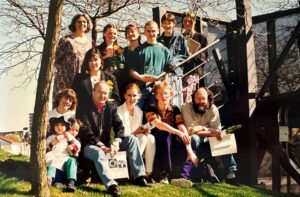
Brent Cameron and educator Michael Maser created Virtual High in 1993. Launching that September, the program was an early and far more informal version of what SelfDesign Learning Community now offers learners in higher grades.
Virtual High was not just new, it differed radically from most middle- and high-school programs offered in B.C. at that time. Funded by the BC Ministry of Education and not-for-profit organizations in the Vancouver area, the program was designed primarily for high school–aged youth at risk of dropping out of school. It extended the same approach to learning that set Wondertree apart — learner-centred, learner-led learning, supported by caring relationships with learning consultants and mentors. It didn’t offer learners high school diplomas. Instead, it offered support for learning computer skills and access to what were high-end computers at the time so that learners could take online courses.
As happened at the Wondertree Learning Centres, each of the approximately 35 learners enrolled with Virtual High determined their own learning goals for the year and designed their own learning plans to meet those goals, in consultation with their learning consultants. The learners also signed agreements to abide by the school’s expectations and standards of conduct and to meet the learning expectations they had committed to.
Together, they pooled and budgeted their monthly contributions towards tuition to hire local experts who would share their skills and knowledge as mentors. The learners scheduled their days as they saw fit. Many of them took online courses.
Brent rented an old house in Arbutus Ridge, Vancouver, to serve as the school’s physical hub, with a live-in educator–caretaker, a kitchen, “offices” for the learners, an art studio, meeting rooms and a large backyard. Every week, learners and their learning consultants crowded into the house’s largest room for a Big Group Meeting (or BGM). There, they discussed and worked to resolve issues affecting the school — things like what group projects to work on next, what mentors to hire, and who on the week’s cleaning roster needed to step up in the kitchen, take out the garbage or mow the lawn.
“Because technology and computers were becoming more and more of a thing, in the original plan, Michael and my dad thought the house would just be like a casual centre where students would drop in,” says Ilana Cameron, Brent’s daughter and the inspiration for Virtual High and the program for younger learners, Wondertree. “The idea was that we’d mostly be learning online, doing courses online and connecting online and occasionally dropping by the centre for meetings or whatever.”
However, in just a few months, what had originally been proposed as a loose, virtual network of teens learning online and at home instead coalesced into a tight-knit in-person community of learners, educators and others.
“A lot of us did 100 per cent of what we did on site, and there was almost nothing online,” Ilana says. “Everyone wanted to hang out and play games. There was a badminton court in the backyard. Humans are mammals, right? Being social and interacting is healthy for us. And that was the juiciest part: it attracted other people like Raffi (the well-known children’s music performer), Michael Moore (the Academy Award–winning director), and parents, and different people would come through and just hang out because it was just such a vibrant community hub with different things going on.”
“I spent most of my time there,” Kalev says. “I lived six blocks away, and I wouldn’t always go home. It was definitely a community thing. It was a good community to grow up in.”
“It was the kind of social place where the kids didn’t want to leave, they wanted to stay there,” Pille says. “They stayed through the evenings. They went there on the weekends. They sometimes stayed overnight. It was their social home.”
[For a detailed account of Virtual High, please see Michael Maser’s 1997 Master’s thesis: Virtual High: Toward an ecology of being.]
Kalev after Virtual High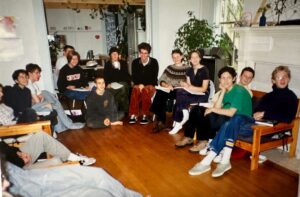
When Virtual High ended, Kalev eventually got his general high school equivalent diploma (GED) and enrolled in a computer program at a local Vancouver college. After finishing, he was offered a position with Lionhead Studios in Guildford, south of London, in the U.K.
While working full-time as a programmer, an opportunity came up to do a part-time Master’s degree in game design at Brunel University London, while continuing at Lionhead.
He got in.
“I didn’t graduate from high school — I don’t consider a GED the same as a high school diploma — I didn’t get a Bachelor’s degree, but I got a Master’s degree. And it was really fun,” he says. “Then, about two-thirds of the way through the Master’s program, the professor in charge of the course came to me and said, ‘If you want, you can switch to the Ph.D. program.’ It was really tempting — to be able to get a Ph.D. without having done any prior degrees, but it was too much of a time commitment with work and a young family.”
After about eight years with Lionhead, he moved to Supermassive Games, also in the U.K., where he worked first as a game designer and then as a senior designer.
Looking back at the impact his years with Virtual High has had on his life, Kalev says he can’t separate the experience from the rest of his life.
He does say, however, that “going through my formative years in a supportive community like that — I can’t imagine how that wouldn’t have had an impact, compared to what I see most people going through.”
And another thing he says he has come to recognize over the years is that at Virtual High, he learned how to learn and he learned, without being aware of it, that learning happens naturally — even when a person isn’t aware it’s happening.
As for mom Pille, she says, “The quality of community and the relationship between adults and children that were fostered at Virtual High has encouraged the situation I find myself in now — my adult son and I are the best of friends!”
Kalev’s take-aways from his Virtual High experience:
- Learning is fundamental to the human experience, not just something that one does when one’s a kid.
- Learning is not being taught something. Learning is how you grow, and as long you’re learning, you’re growing.
- Learning is always happening, and if you embrace that, you’ll always be open to change. Change is going to happen whether you’re open to it or not, but you’ll have a more pleasant experience in life if you look forward to change rather than trying to avoid it.
- Anytime you get a group of kids together, the kids will end up defining the community’s culture more than the adults who are on hand to guide the culture will.
- Kids need community.
Meet other SelfDesign learners, past and present
Meet other members of SelfDesign’s community, past and present

